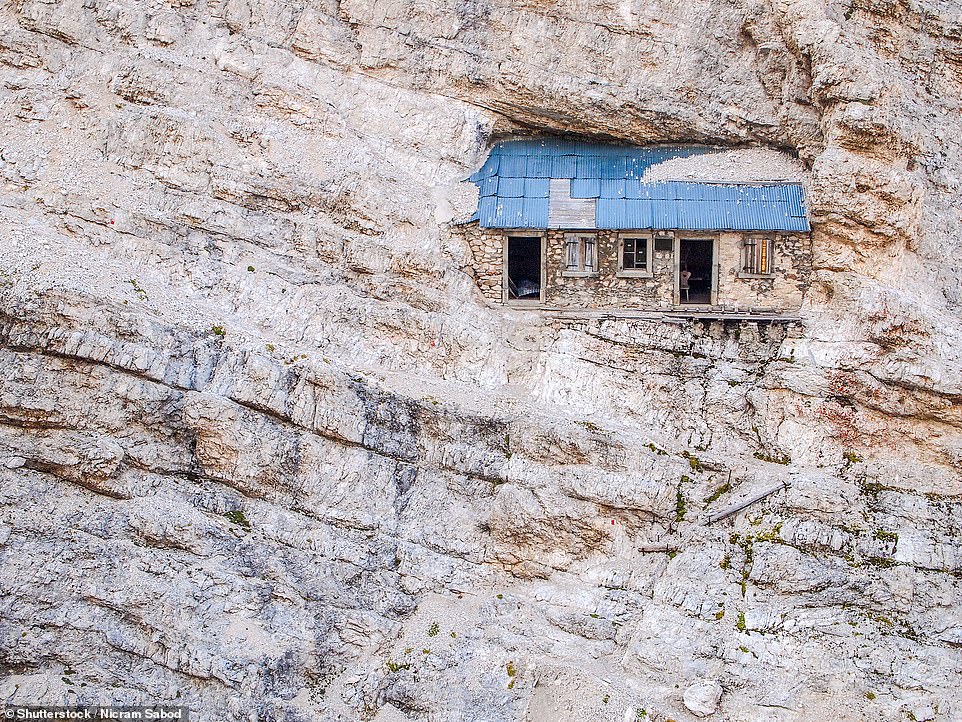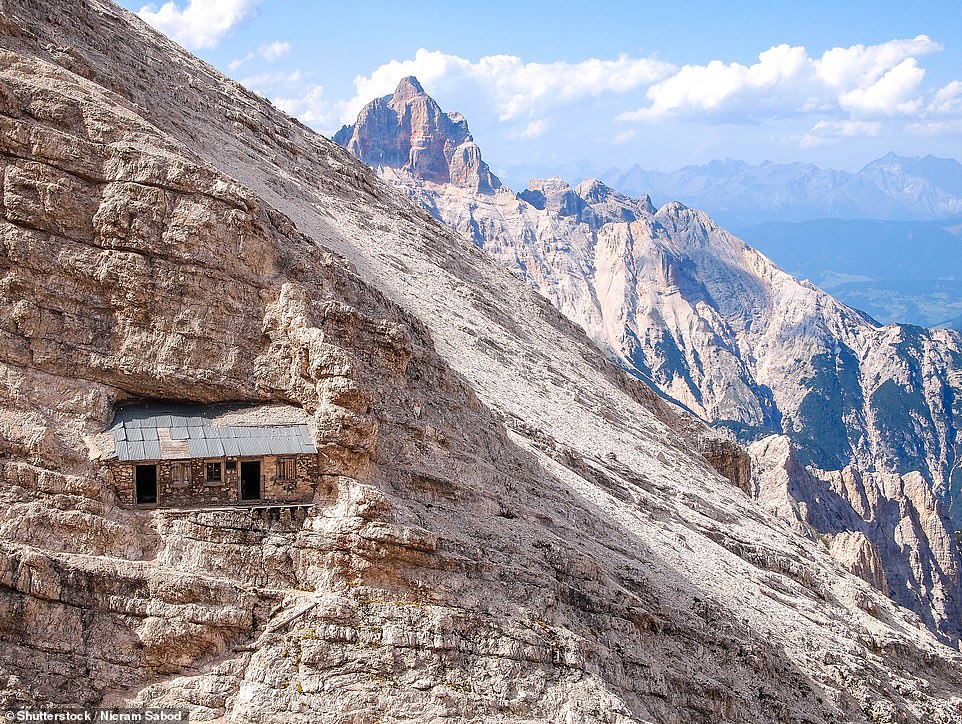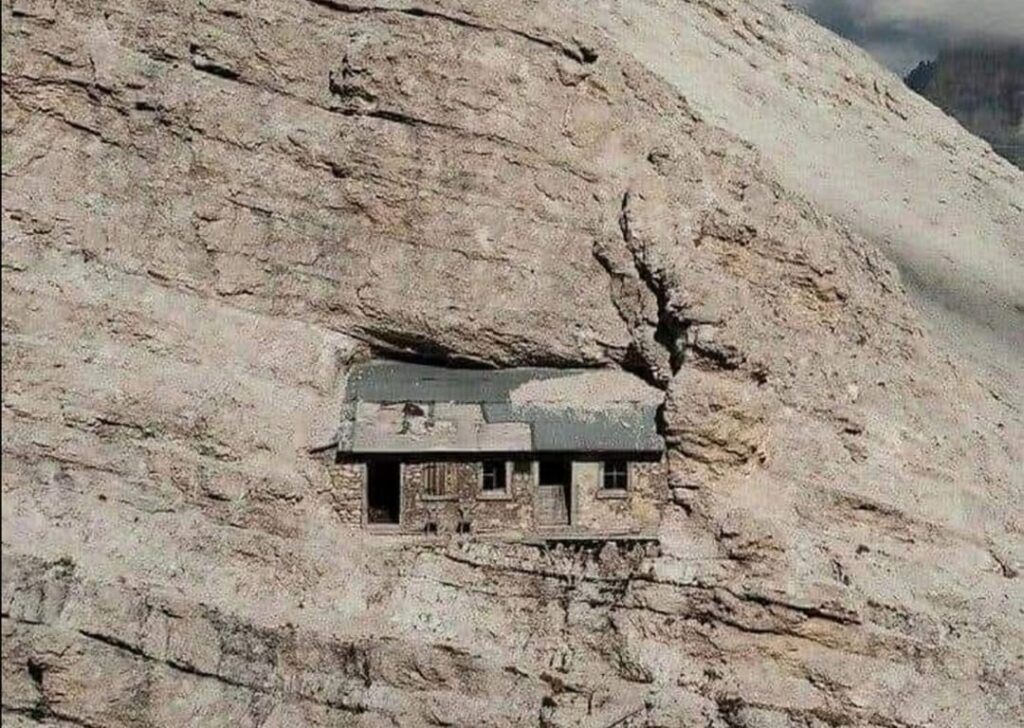High in the rugged mountains of Piedmont, Italy, perched nearly 9,000 feet above sea level, sits Buffa di Perrero — a solitary stone structure often called the loneliest house in the world. Built during World War I, this tiny outpost was designed as a military shelter, clinging to the edge of a cliff with no visible road, neighbors, or even vegetation in sight.

Its purpose was as daring as its location — serving Italian soldiers monitoring enemy movement across the Alpine front. Surrounded by snow most of the year and accessible only by foot or rope, Buffa di Perrero remains a haunting reminder of the extremes endured during wartime.
“This wasn’t built for comfort,” says Gianni Moretti, a local historian. “It was built for survival, a silent watchtower above the clouds.”

Though no longer in use, the house still stands, weathered but intact, a feat of both engineering and human willpower. Its isolated beauty continues to attract photographers, hikers, and those drawn to the quiet resilience of places forgotten by time.
Buffa di Perrero is not just a structure, it’s a symbol of endurance, solitude, and history carved into stone, defiantly overlooking the valleys below.







